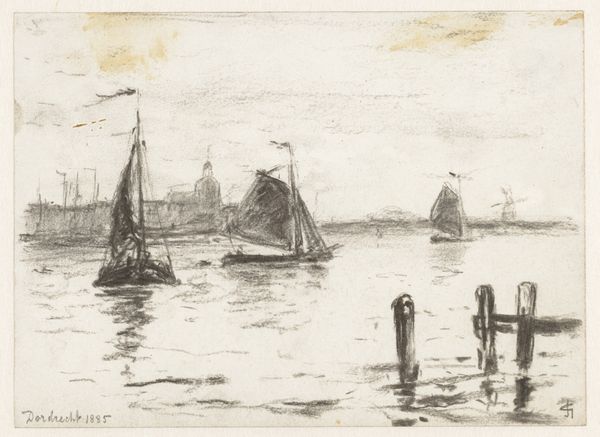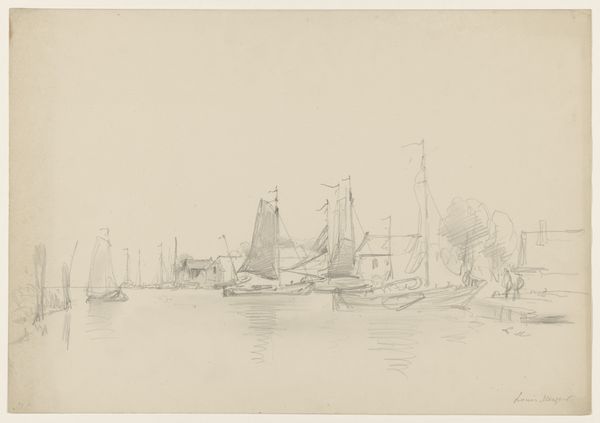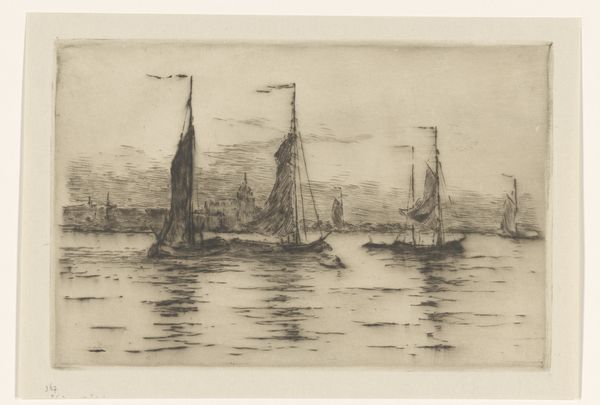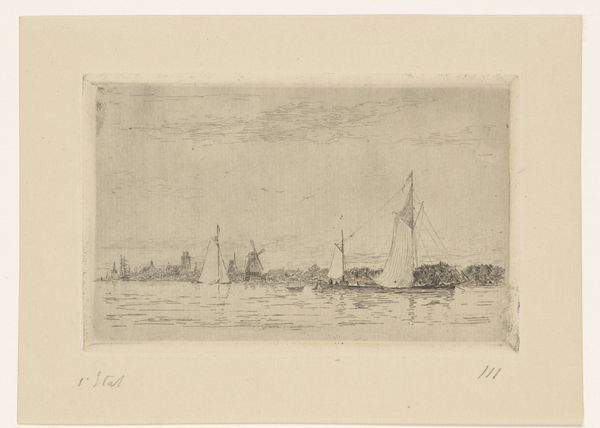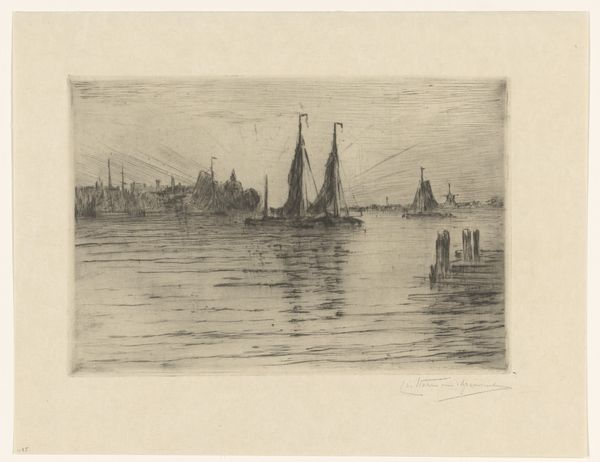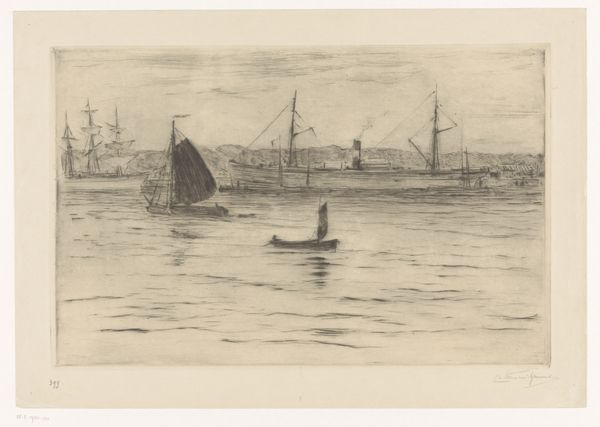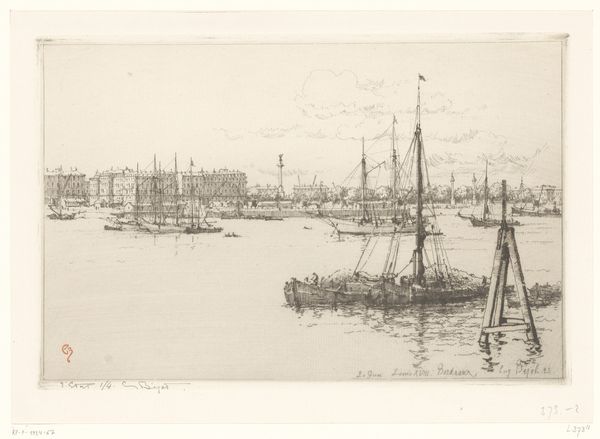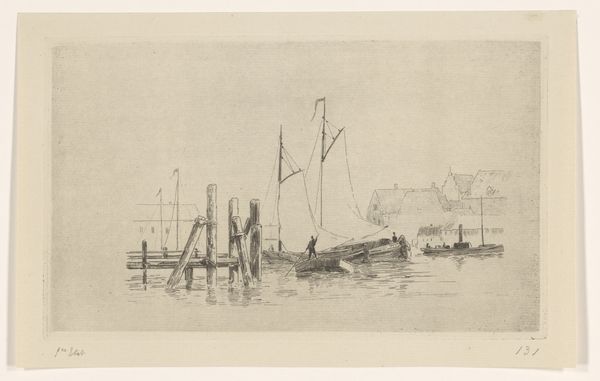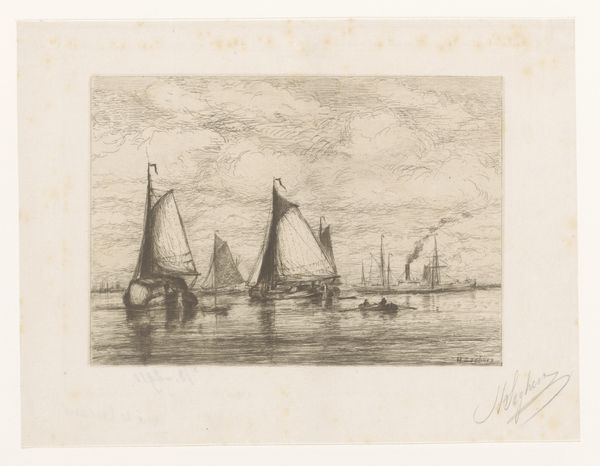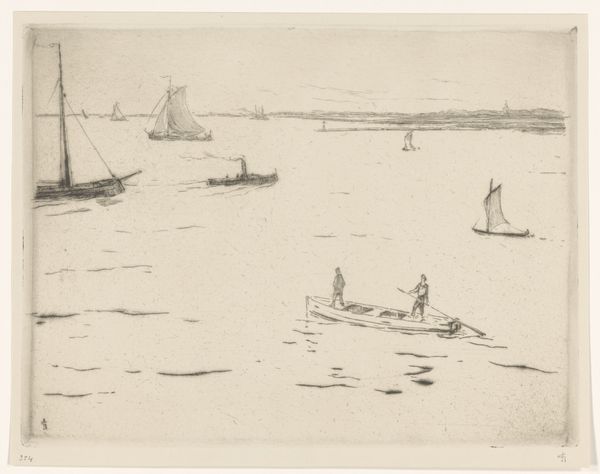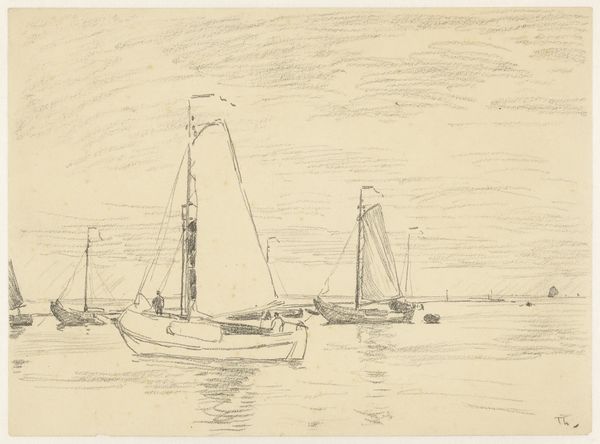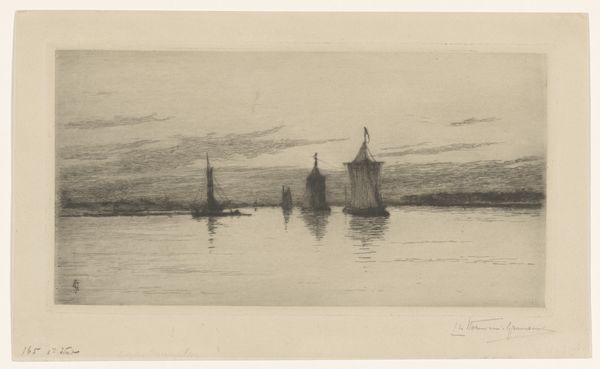
etching
#
dutch-golden-age
#
impressionism
#
etching
#
landscape
#
etching
Dimensions: height 158 mm, width 230 mm
Copyright: Rijks Museum: Open Domain
Curator: What a beautifully understated piece! We're looking at "Boats with Hay on the Vecht near Weesp," an etching by Carel Nicolaas Storm van 's-Gravesande, created around 1880. Editor: My first thought is, it's remarkably quiet. A serene, almost ghostly landscape. The etching gives it a delicate, almost faded quality. Curator: Indeed. And that delicacy speaks volumes, I think, about the artist's sensibility and the position of women during this time. Van 's-Gravesande, despite achieving some recognition, still navigates a space defined by gendered expectations within the art world. We see the reflection of marginalized identities within the composition. The hay barges speak to those social struggles. Editor: Absolutely, and that focus on the hay barges—it really emphasizes the materiality of the subject. These weren’t just boats; they were vessels crucial to the Dutch economy and labor practices. This brings into play the manual labor needed to gather and transport the hay and the implied network of commerce involved. Look at how the etching captures the texture of the hay. It speaks to process and daily living. Curator: And beyond the practical, don't you find a deeper symbolism in the river itself? Water often signifies fluidity, change, and the subconscious. Perhaps here, it subtly critiques the rigid societal structures surrounding the artist. Think about how that connects to notions of womanhood. How gender affects their autonomy. Editor: Yes, but that's intertwined with labor, and the water suggests movement and exchange, a kind of quiet circulation. The use of etching as a medium is noteworthy too. It's a process that allows for multiples, democratizing art, which somewhat mirrors the distribution of goods like hay, even if limited. Curator: You know, considering those contextual aspects enhances the emotional resonance so much more! We understand those implications through technique and subject matter. Editor: Right, those subtle technical nuances that help build a complex and moving portrayal. The work engages viewers not just on an aesthetic level, but it helps prompt dialogue about culture and craft, even class struggles. I leave with a sense of respect for its quiet activism and insight into materiality. Curator: Precisely! It prompts a rethinking of categories—the artwork becomes less about one idyllic scene and instead, a window to understanding intersecting social structures of late 19th-century Netherlands.
Comments
No comments
Be the first to comment and join the conversation on the ultimate creative platform.
